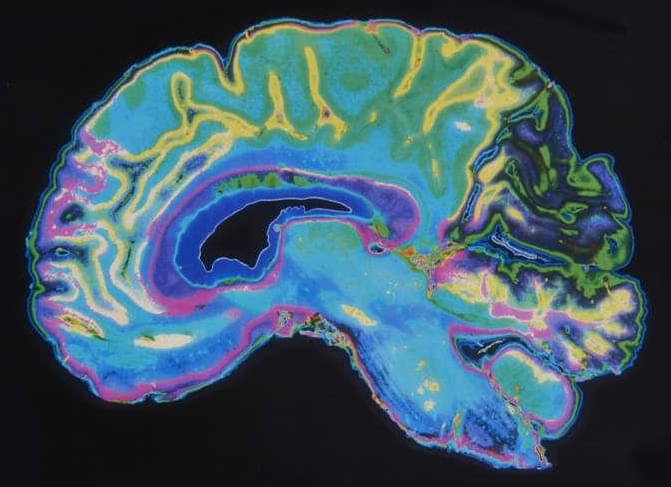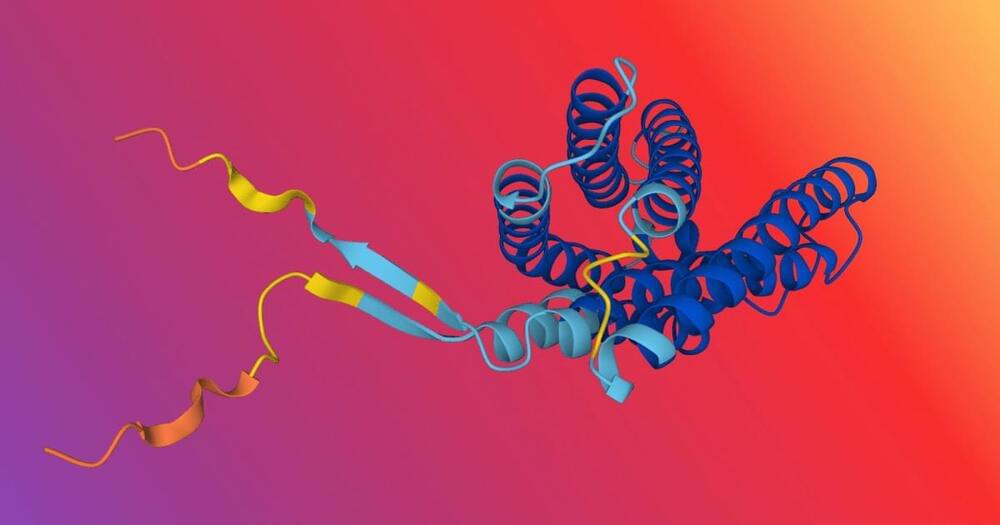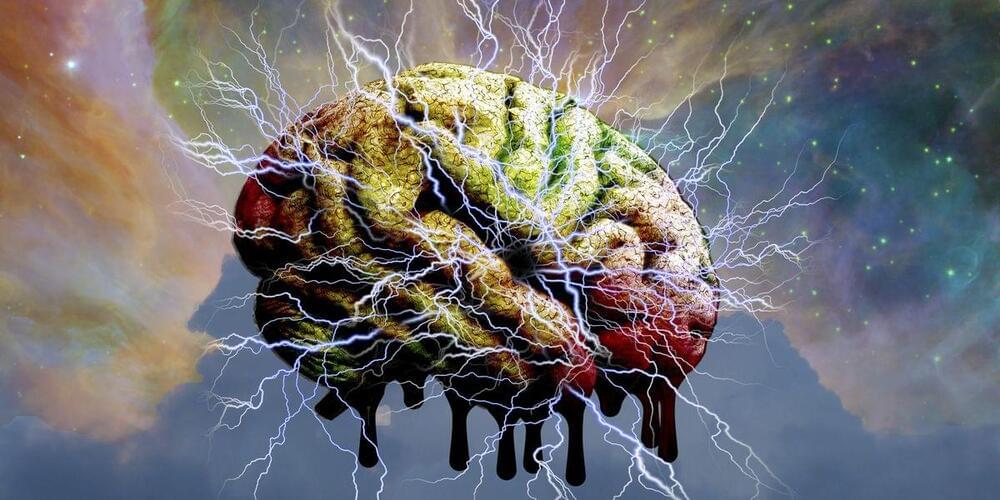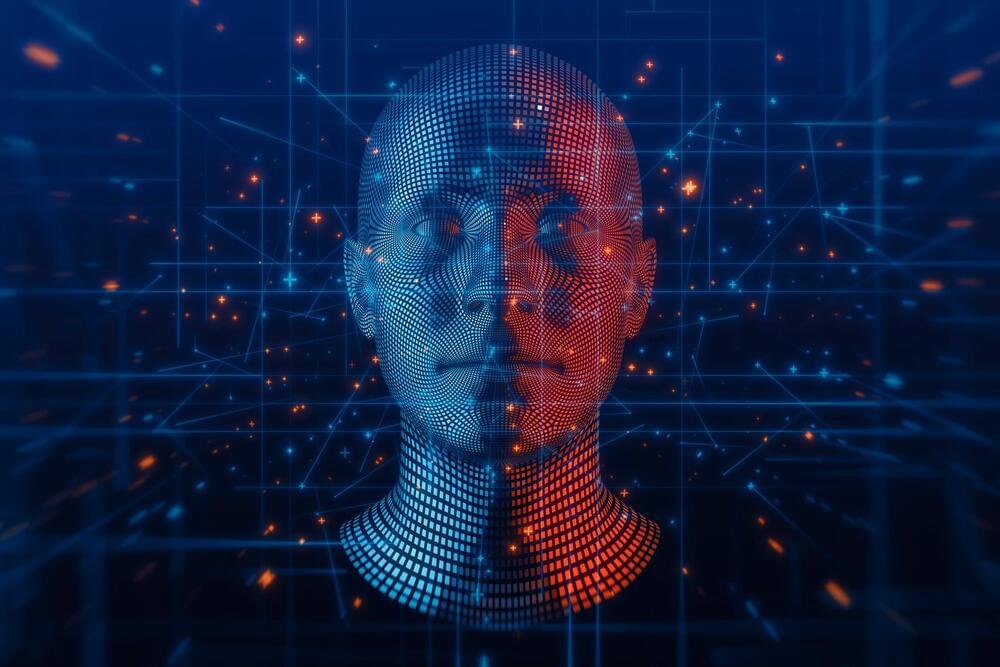“The disease starts to develop 20 years before the onset of symptoms, so it’s important to detect it early,” Per Nilsson said.



A UK-led team of researchers restrained mice for 6 hours to induce a stress response and then analyzed the rodents’ brains on a molecular level.
This led to the discovery of increased levels of five microRNAs (miRNAs) — small molecules that help determine which genes in a cell are expressed and which aren’t — in the amygdala, the brain region implicated in anxiety. When the researchers took a closer look at the miRNA that reached the highest levels, miR-483-5p, they saw that it suppressed the expression of the Pgap2 gene — and that this suppression appeared to provide stress relief and reduce anxiety-related behavior.
➡️
The discovery of an “anxiety gene” — and a natural way to turn it off — in the brains of mice could lead to new treatments for anxiety disorders, which are the most common type of mental illness in the world.
The challenge: While anyone can experience worry or dread, people with anxiety disorders experience those feelings pervasively and often for no identifiable reason.
Medications can relieve the symptoms of anxiety, but because we don’t really know what is going on in the brains of people with anxiety, finding the right drug or combination of drugs can be a time-consuming process of trial and error.


Summary: Researchers unveil how neurons in the brain depict time and space, fundamental to human consciousness.
Utilizing special depth electrodes, they studied patients undergoing treatment for epilepsy, revealing “place cells” for spatial awareness and “time cells” for temporal comprehension.
One study showed these cells operate independently yet concurrently during navigation tasks. Another found certain neurons maintained regular temporal patterns regardless of external stimuli speed.
The convergence of Biotechnology, Neurotechnology, and Artificial Intelligence has major implications for the future of humanity. This talk explores the long-term opportunities inherent to these fields by surveying emerging breakthroughs and their potential applications. Whether we can enjoy the benefits of these technologies depends on us: Can we overcome the institutional challenges that are slowing down progress without exacerbating civilizational risks that come along with powerful technological progress?
About the speaker: Allison Duettmann is the president and CEO of Foresight Institute. She directs the Intelligent Cooperation, Molecular Machines, Biotech & Health Extension, Neurotech, and Space Programs, Fellowships, Prizes, and Tech Trees, and shares this work with the public. She founded Existentialhope.com, co-edited Superintelligence: Coordination & Strategy, co-authored Gaming the Future, and co-initiated The Longevity Prize. She advises companies and projects, such as Cosmica, and The Roots of Progress Fellowship, and is on the Executive Committee of the Biomarker Consortium. She holds an MS in Philosophy & Public Policy from the London School of Economics, focusing on AI Safety.

Within seconds of the withdrawal of life support, two of the patients exhibited a surge of neurophysiological activity characterized by changes in several different brain wave “bands,” at both the local and global levels. Freethink.
Researchers found a surge of neurophysiological activity in the dying human brain, including in regions associated with conscious processing.

To make our way through the world, our brain must develop an intuitive understanding of the physical world around us, which we then use to interpret sensory information coming into the brain.
How does the brain develop that intuitive understanding? Many scientists believe that it may use a process similar to what’s known as “self-supervised learning.” This type of machine learning, originally developed as a way to create more efficient models for computer vision, allows computational models to learn about visual scenes based solely on the similarities and differences between them, with no labels or other information.
A pair of studies from researchers at the K. Lisa Yang Integrative Computational Neuroscience (ICoN) Center at MIT offers new evidence supporting this hypothesis. The researchers found that when they trained models known as neural networks using a particular type of self-supervised learning, the resulting models generated activity patterns very similar to those seen in the brains of animals that were performing the same tasks as the models.

🌐🧠🚨
In a recent study published in the Journal of Psychiatric Research, researchers describe the relationship between problematic internet use (PIU) and the symptoms of attention deficit hyperactivity disorder (ADHD).
Study: The relationship between problematic internet use and attention deficit, hyperactivity and impulsivity: A meta-analysis. Image Credit: Alexxndr / Shutterstock.com
Background
Excessive use of the internet has become a potential public health concern worldwide. In fact, according to the Diagnostic and Statistical Manual of Mental Disorders 5th edition (DSM-5), internet gaming disorder, gaming, and gambling disorder are considered specific mental health problems associated with excessive internet use.

Research led by Peking University, China, has discovered a single type of retinal photoreceptor cell in Drosophila (fruit fly) is involved in both visual perception and circadian photoentrainment by co-releasing histamine and acetylcholine at the first visual synapse.
In a paper, “A single photoreceptor splits perception and entrainment by cotransmission,” published in Nature, the team details the discovery that the Drosophila visual system segregates visual perception and circadian photoentrainment by co-transmitting two neurotransmitters, histamine and acetylcholine, in the R8 photoreceptor cells.
Light detection involves capturing signals through photoreceptors in the eye, which are essential for image formation and subconscious visual functions, such as regulating biological rhythms according to the daily light-dark cycle (photoentrainment of the circadian clock). The optical system has distinct pathways for image formation (based on local contrast) and non-image-related tasks (based on global irradiance).

Last month, OM1, a leading real-world data and tech company focused on chronic conditions, announced the launch of its Parkinson’s disease (PD) premium dataset and the enhancement of its Mental Health & Neuroscience Real-World Data Network.
The dataset includes more than 7,000 patients prospectively followed by neurologists in hundreds of clinics across all 50 states. OM1 enriches the data by extracting relevant information from treating clinician notes using its AI and language modeling, and data points include key symptoms, disease severity, treatments, longitudinal outcomes and clinical response. In addition to the dataset, data from an additional 700,000 PD patients are available in the OM1 Real-World Data Cloud for modeling health economics outcomes, patient recruitment for clinical trials, prescriber trends and other research needs.
The dataset combines real-world data sources, such as electronic medical records (EMR), medical and pharmacy claims, mortality data and social determinants of health (SDoH), to provide deeper insights into Parkinson’s disease patient journeys. The data can be leveraged to accelerate medical research and to support approvals and reimbursement, reducing the time to market and improving existing therapies.